Attracting European Funds in the Romanian Economy and Leverage Points for Securing their Sustainable Management: A Critical Auditing Analysis
Abstract
1. Introduction
2. Literature Review
3. Research Methodology
- -
- regional GDP sustainable growth;
- -
- the average growth of the structural allocations;
- -
- regional disparities;
- -
- welfare growth;
- -
- sustainable GDP growth;
- -
- post-crisis economic recovery;
- -
- regional administrative capacity;
- -
- compliance with the access to European funds;
- -
- structural fund allocations;
- -
- correcting allocation policies;
- -
- national accounts system’s control mechanisms;
- -
- absorption vulnerabilities;
- -
- unbalanced national budgets;
- -
- growing public debt.
- the sum of legal regularity measures (R) is defined by the relationship R = NOP − ;
- the sum of audit security measures (A) is defined by the relationship
- the new fraud triangle becomes (see Figure 1).
- T-TEST PAIRS—statistical procedure of analyzing for testing the NOP model (testing on paired samples)
- Criteria = the means of segregation for the tested sample.
- CI—incidence coefficient (95.0%).
- NOP—the risk of fraud and error through all identified elements that characterize it (the need for funding, opportunity and permissibility).
- N′O′P′—the risk of fraud and error through all the identified elements that characterize it (the need for funding, opportunity, and permissibility) reduced after the application of legislative regularity measures.
- N & N′—the financial need (expressed in terms of bid for OP-Environment) assimilated to fraud and error before and after regulatory practices.
- Bid—financing request.
- O & O′—the cumulative vulnerability that generates the opportunity for fraud and error versus the residual opportunity in the assimilation of fraud and the reduced error through legislative regularity practices;
- P & P′—the vulnerabilities that generate permissibility for producing frauds and errors versus the residual permissiveness assimilated to fraud and error through legislative regularity practices.
4. Results and Discussions
5. Conclusions
Author Contributions
Funding
Conflicts of Interest
References
- Pellegrini, G.; Terribile, F.; Tarola, O.; Muccigrosso, T.; Busillo, F. Measuring the effects of European Regional Policy on economic growth: A regression discontinuity approach. Pap. Reg. Sci. 2013, 92, 217–233. [Google Scholar] [CrossRef]
- Crescenzi, R.; Rodríguez-Pose, A. Infrastructure and regional growth in the European Union. Pap. Reg. Sci. 2012, 91, 487–513. [Google Scholar] [CrossRef]
- Kyriacou, A.P.; Roca-Sagalés, O. The Impact of EU Structural Funds on Regional Disparities within Member States. Environ. Plan. C Gov. Policy 2012, 30, 267–281. [Google Scholar] [CrossRef]
- Bachtler, J.; Mendez, C.; Oraže, H. From Conditionality to Europeanization in Central and Eastern Europe: Administrative Performance and Capacity in Cohesion Policy. Eur. Plan. Stud. 2014, 22, 735–757. [Google Scholar] [CrossRef]
- Pinho, C.; Varum, C.; Antunes, M. Structural Funds and European Regional Growth: Comparison of Effects among Different Programming Periods. Eur. Plan. Stud. 2015, 23, 1302–1326. [Google Scholar] [CrossRef][Green Version]
- Biondi, Y. Harmonising European Public Sector Accounting Standards (EPSAS): Issues and Perspectives for Europe’s Economy and Society. Account. Econ. Law 2014, 4, 165–178. [Google Scholar] [CrossRef]
- Tosun, J. Absorption of Regional Funds: A Comparative Analysis. JCMS J. Common Mark. Stud. 2014, 52, 371–387. [Google Scholar] [CrossRef]
- McCann, P.; Ortega-Argilés, R. Smart specialisation in European regions: Issues of strategy, institutions and implementation. Eur. J. Innov. Manag. 2014, 17, 409–427. [Google Scholar] [CrossRef]
- Haughton, T. Money, Margins and the Motors of Politics: The EU and the Development of Party Politics in Central and Eastern Europe. JCMS J. Common Mark. Stud. 2014, 52, 71–87. [Google Scholar] [CrossRef]
- Zaman, G.; Georgescu, G. The Absorption of EU Structural and Cohesion Funds in Romania: International Comparisons and Macroeconomic Impact; MPRA Paper: Munich, Germany, 2014; 57450; Available online: https://mpra.ub.uni-muenchen.de/id/eprint/57450 (accessed on 15 March 2020).
- Batusaru, C.; Otetea, A.; Ungureanu, M.A. 7 Years of European Funding in Romania—Between Success and Failure. EURINT Proc. 2015, 2, 21–35. Available online: http://cse.uaic.ro/eurint/proceedings/index_htm_files/EURINT2015.pdf (accessed on 15 March 2020).
- Palea, V. Whither accounting research? A European view. Crit. Perspect. Account. 2017, 42, 59–73. [Google Scholar] [CrossRef]
- Barnett, W.A.; Gaekwad, N.B. The Demand for Money for EMU: A Flexible Functional Form Approach. Open Econ. Rev. 2018, 29, 353–371. [Google Scholar] [CrossRef]
- Machado, M.R.R.; Gartner, I.R. The Cressey hypothesis (1953) and an investigation into the occurrence of corporate fraud: An empirical analysis conducted in Brazilian banking institutions. Rev. Contab. Finanças 2018, 29, 60–81. Available online: http://www.scielo.br/scielo.php?script=sci_arttext&pid=S1519-70772018000100060&nrm=iso (accessed on 12 April 2020). [CrossRef]
- Oroszki, J. Fraud risk for the EU budget—What the ECA recommends, Fraud and corruption, ethics and integrity. 2019, 2, pp. 26–31. Available online: www.eca.EURpa.eu/Lists/ECADocuments/JOURNAL1902/JOURNAL19_02.pdf (accessed on 17 April 2020).
- Chersan, I.C. Audit quality and several of its determinants. Financ. Audit 2019, 93–105. [Google Scholar] [CrossRef]
- Gepp, A.; Linnenluecke, M.K.; O’Neill, T.J.; Smith, T. Big data techniques in auditing research and practice: Current trends and future opportunities. J. Account. Lit. 2018, 40, 102–115. [Google Scholar] [CrossRef]
- Boros, A.; Fogarassy, C. Relationship between Corporate Sustainability and Compliance with State-Owned Enterprises in Central-Europe: A Case Study from Hungary. Sustainability 2019, 11, 5653. [Google Scholar] [CrossRef]
- Bostan, I.; Burciu, A.; Condrea, P. Trends of the communitarian cohesion policies and advertising for eco-investments. Environ. Eng. Manag. J. 2010, 9, 847–851. [Google Scholar]
- Jeppesen, K. The role of auditing in the fight against corruption. Br. Account. Rev. 2019, 51, 100798. [Google Scholar] [CrossRef]
- Farooq, O.; Shehata, N.F. Does external auditing combat corruption? Evidence from private firms. Manag. Audit. J. 2018, 33, 267–287. [Google Scholar] [CrossRef]
- Kassem, R.; Higson, A.W. External Auditors and Corporate Corruption: Implications for External Audit Regulators. Curr. Issues Audit. 2016, 10, 1–10. [Google Scholar] [CrossRef]
- Bostan, I.; Grosu, V. The social effects of the current economic crisis on the European Union labor market. Rev. De Cercet. Si Interv. Soc. 2010, 31, 7–21. [Google Scholar]
- Mates, D.; Grosu, V.; Hlaciuc, E.; Bostan, I.; Bunget, O.; Domil, A.; Moraru, M.; Artene, A. Biological assets and the agricultural products in the context of the implementation of the IAS 41: A case study of the Romanian agro-food system. Arch. Biol. Sci. 2015, 67, 705–714. [Google Scholar] [CrossRef]
- Hay, D.; Cordery, C. The value of public sector audit: Literature and history. J. Account. Lit. 2018, 40, 1–15. [Google Scholar] [CrossRef]
- Osma, B.G.; Gisbert, A.; Cristobal, E.H. Public Oversight Systems for Statutory Auditors in the European Union. Eur. J. Law Econ. Forthcom. 2014, 44, 517–552. [Google Scholar] [CrossRef]
- Edori, D.S.; Edori Simeon, I.S. Auditing and Fraud Control in Corporate Organisations. Res. J. Financ. Account. 2018, 9, 190–196. [Google Scholar]
- Herman, L. Neither takers nor makers: The Big-4 auditing firms as regulatory intermediaries. Account. Hist. 2019, 1032373219875219. [Google Scholar] [CrossRef]
- Howarth, D.; Spendzharova, A. Accountability in Post-Crisis Eurozone Governance: The Tricky Case of the European Stability Mechanism. JCMS J. Common Mark. Stud. 2019, 57, 894–911. [Google Scholar] [CrossRef]
- Jeler, I. Particularities of The Controlled Exercise on Projects Financed From European Funds. Int. J. Acad. Res. Account. Financ. Manag. Sci. 2018, 8, 51–56. [Google Scholar] [CrossRef]
- Anton, S.G.; Bostan, I. The Role of Access to Finance in Explaining Cross-National Variation in Entrepreneurial Activity: A Panel Data Approach. Sustainability 2017, 9, 1947. [Google Scholar] [CrossRef]
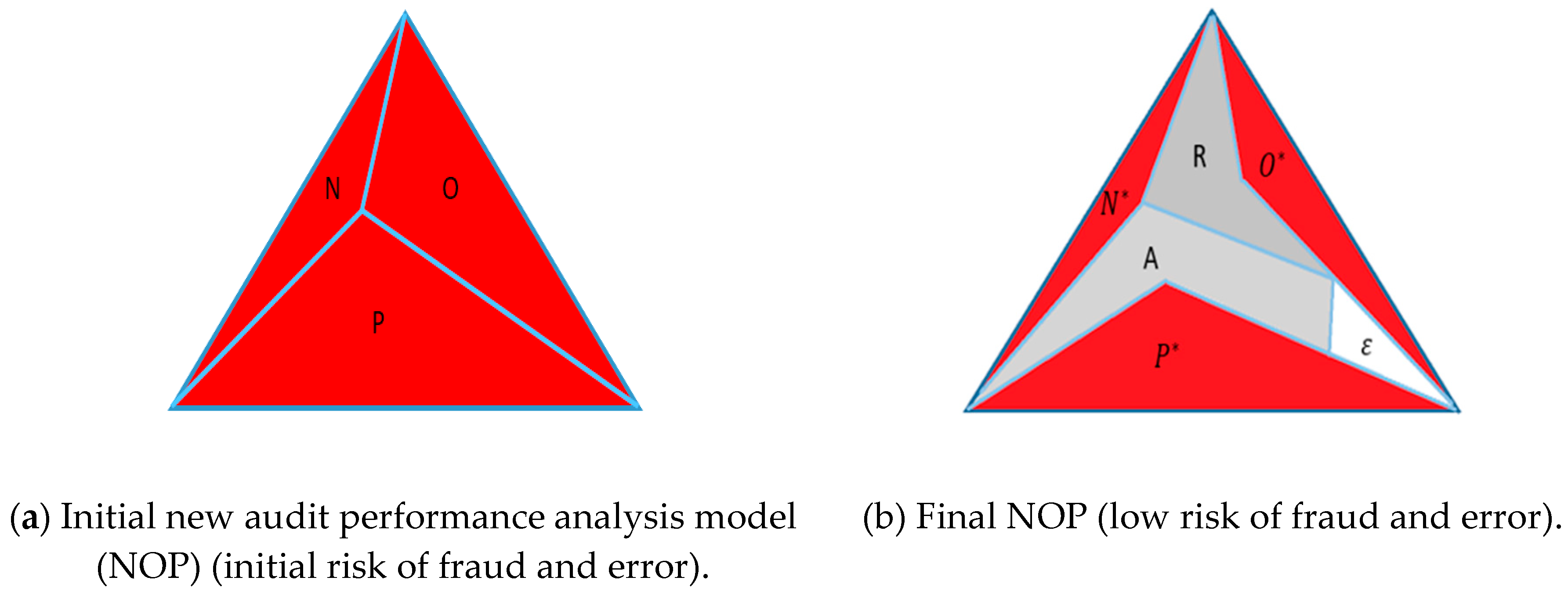
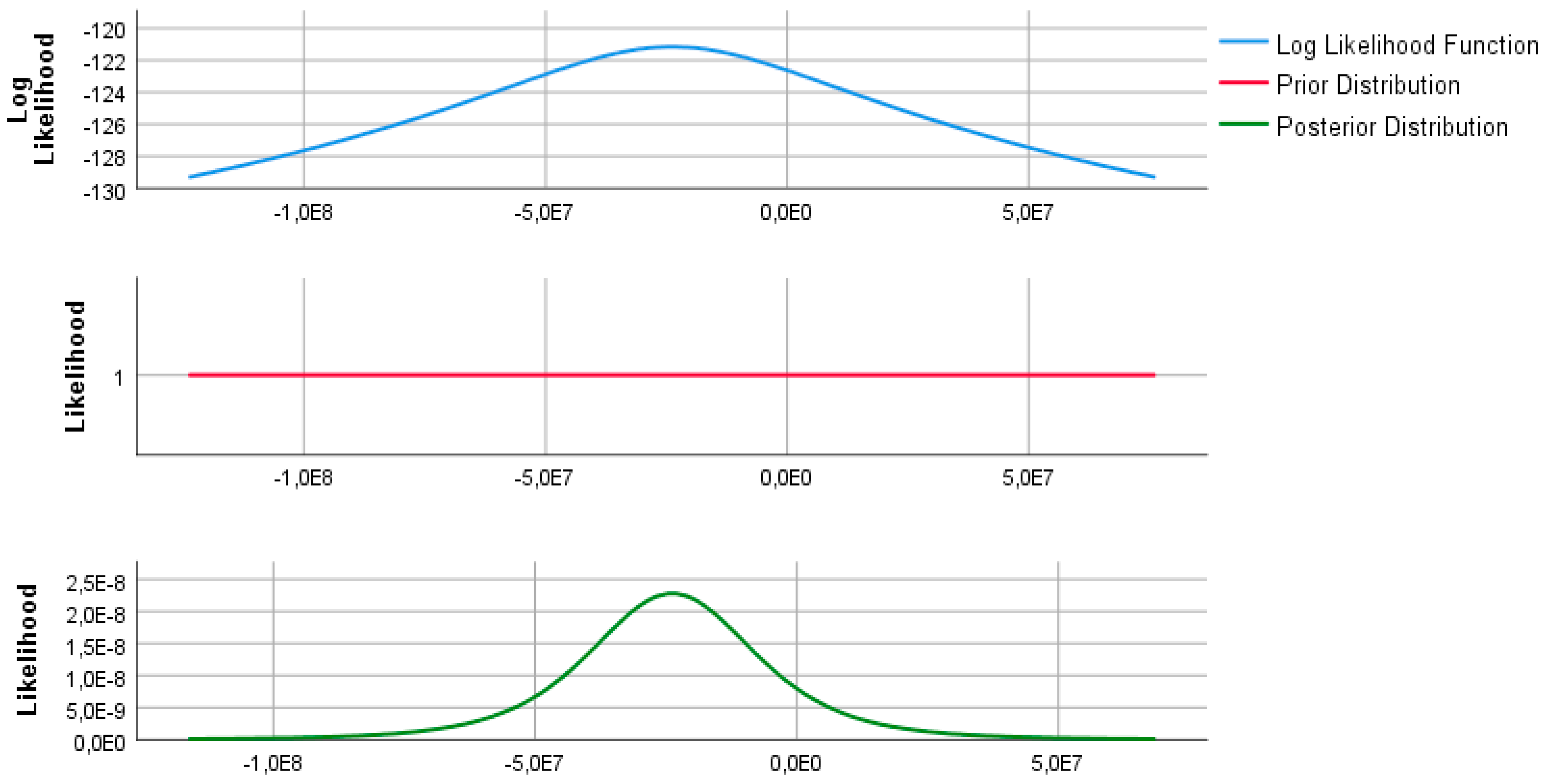
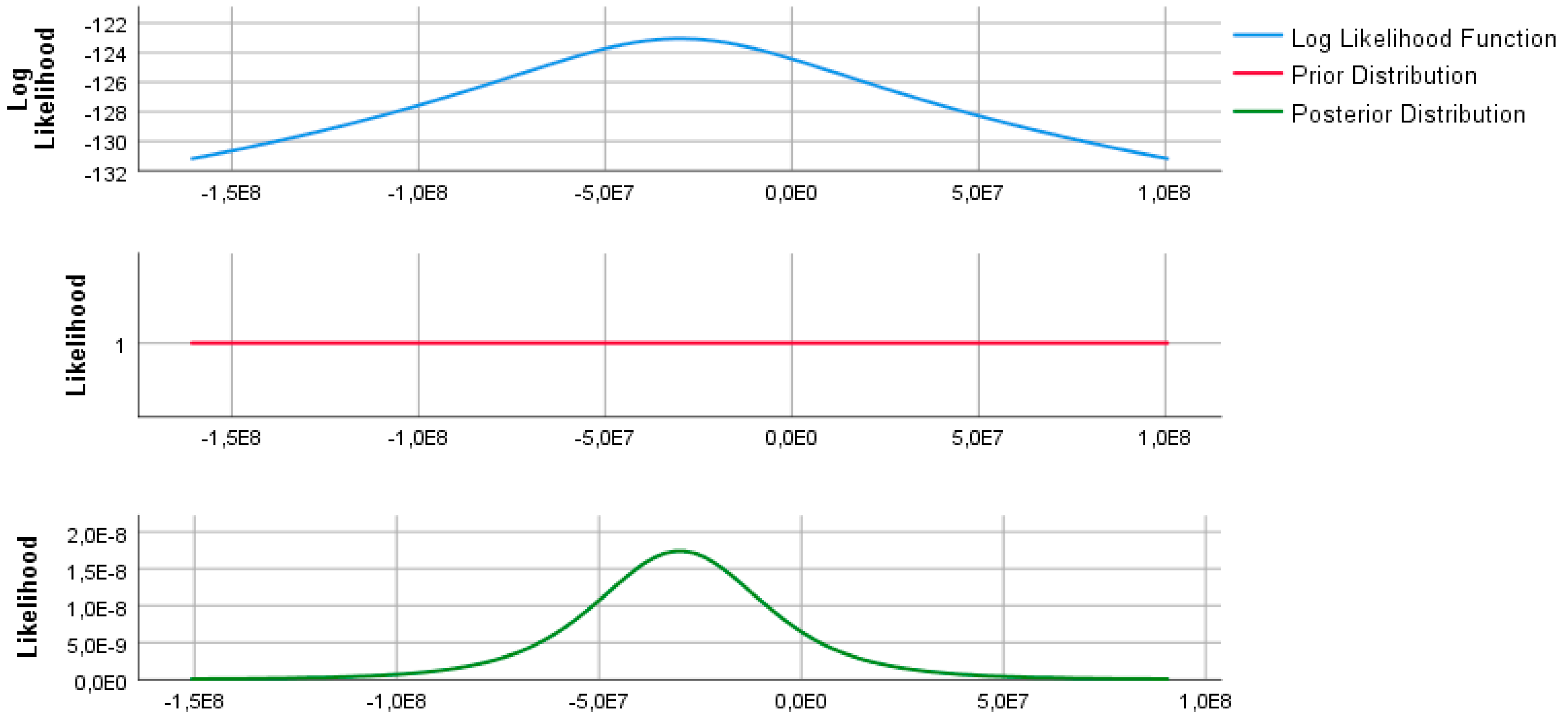
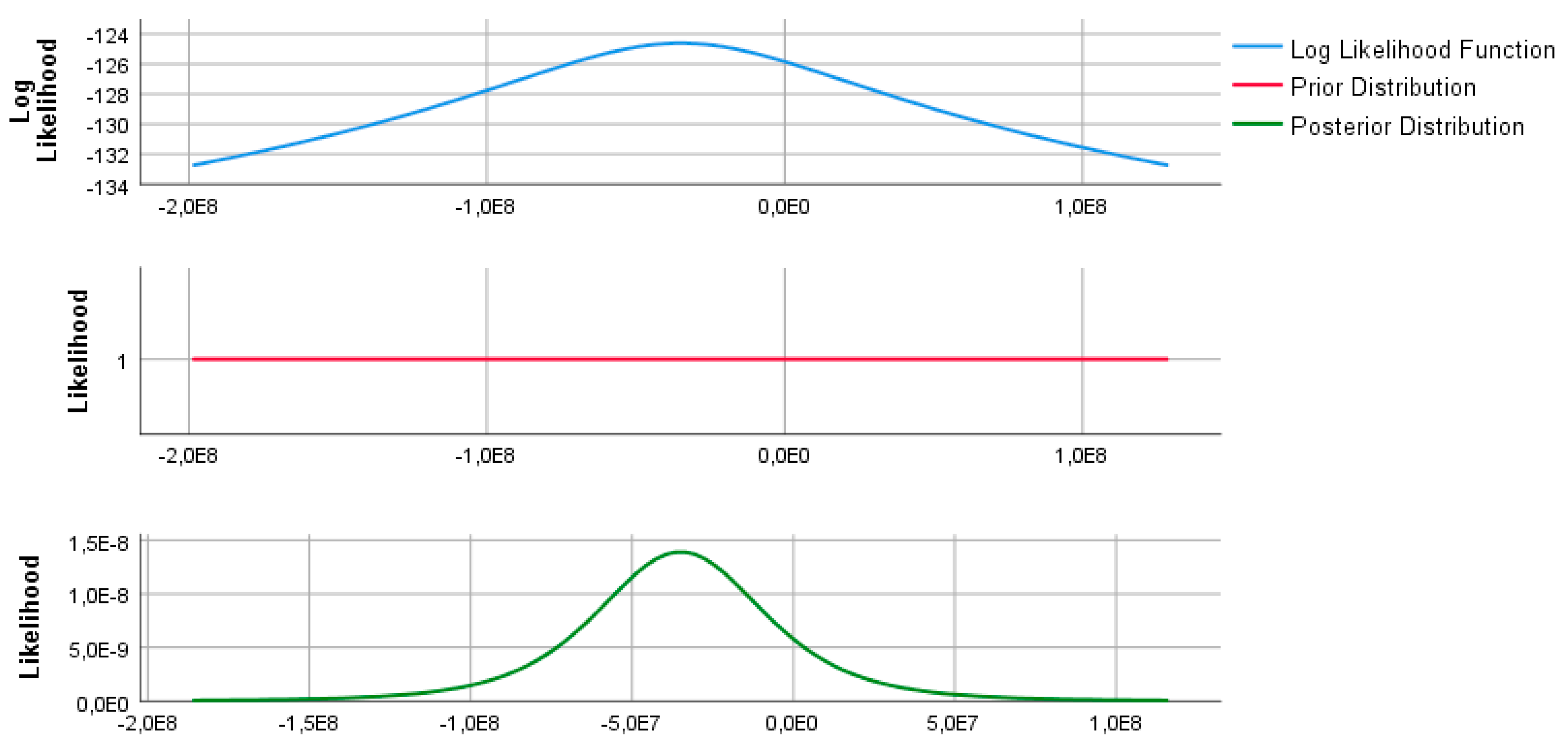
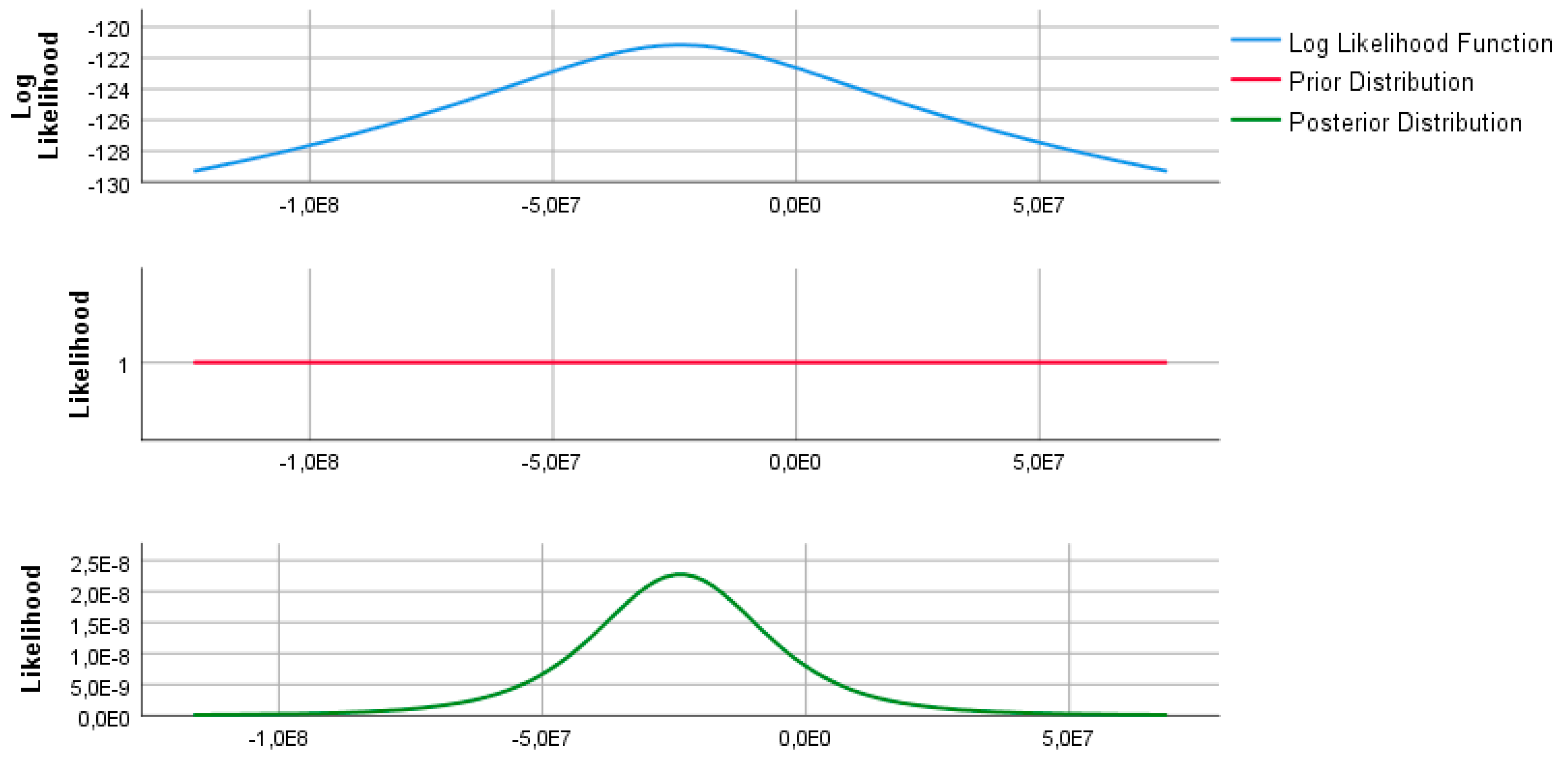
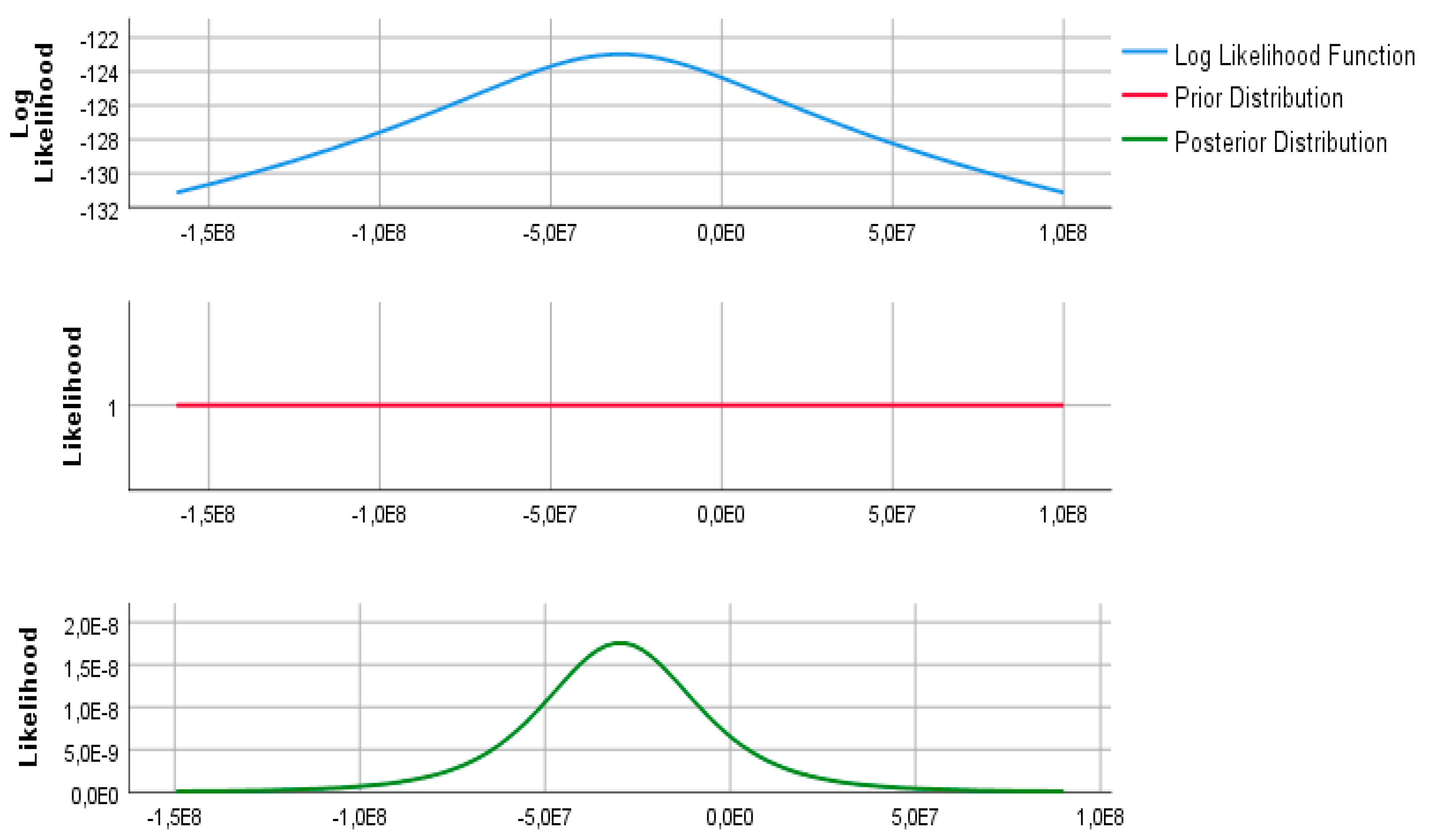
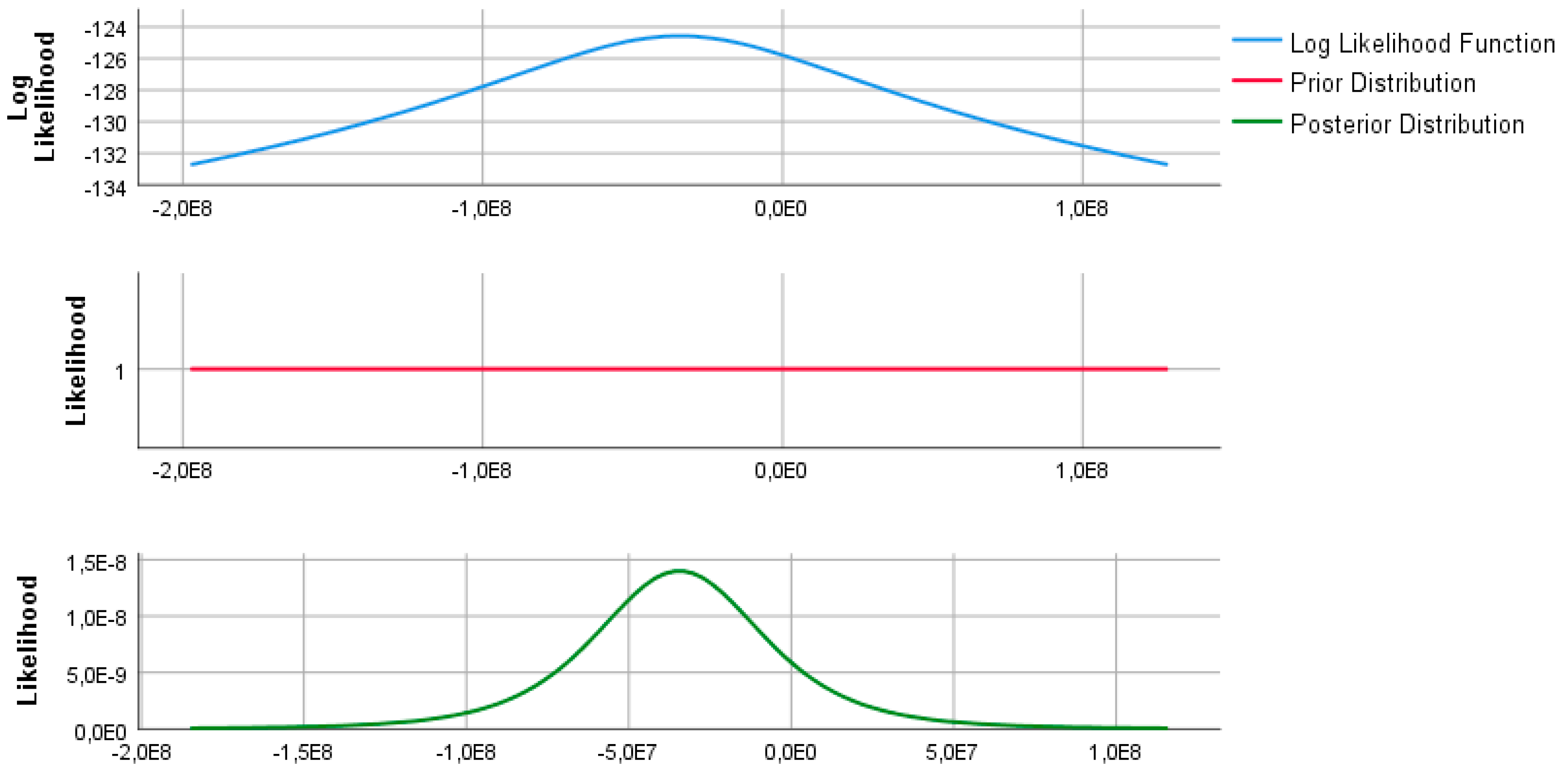
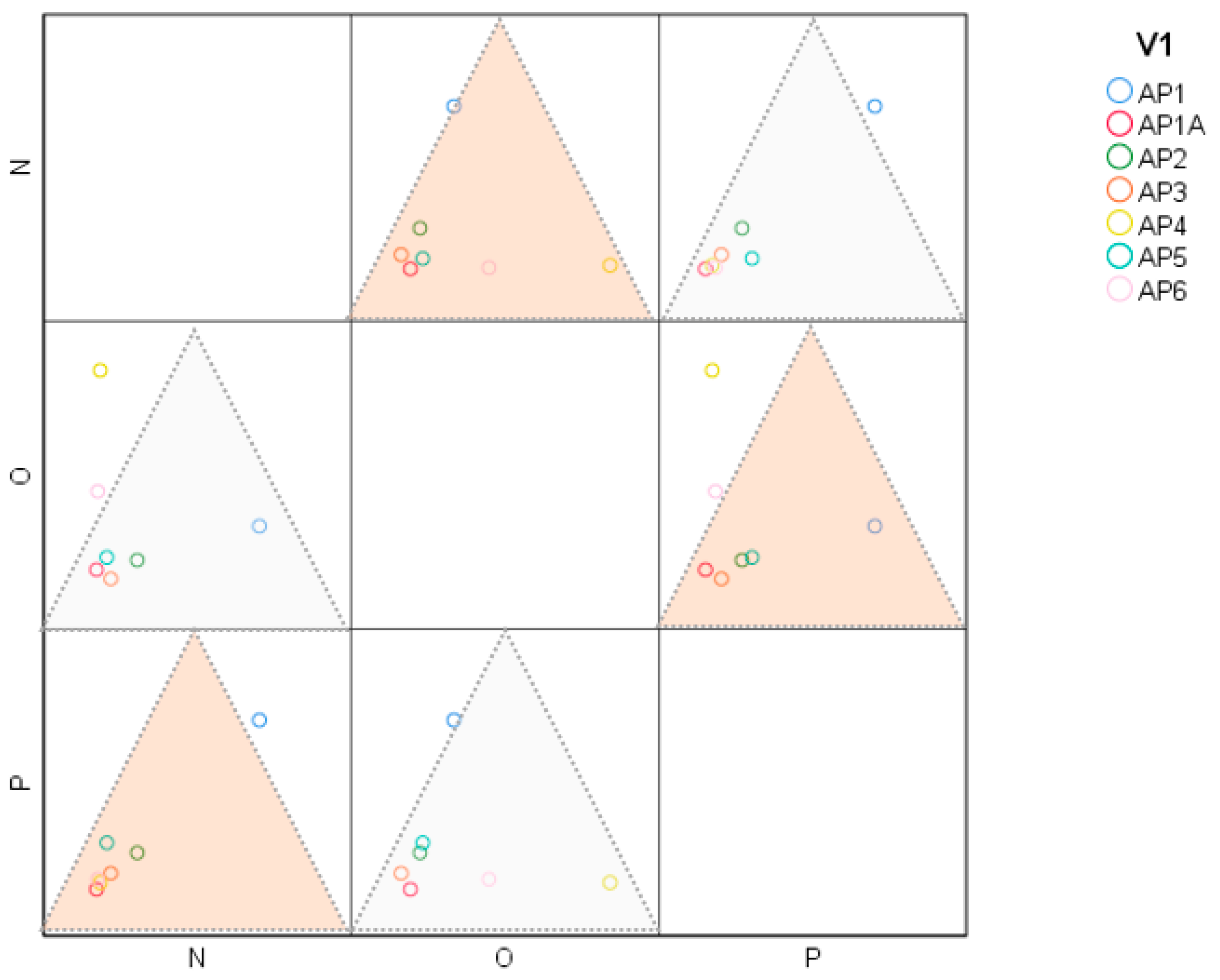
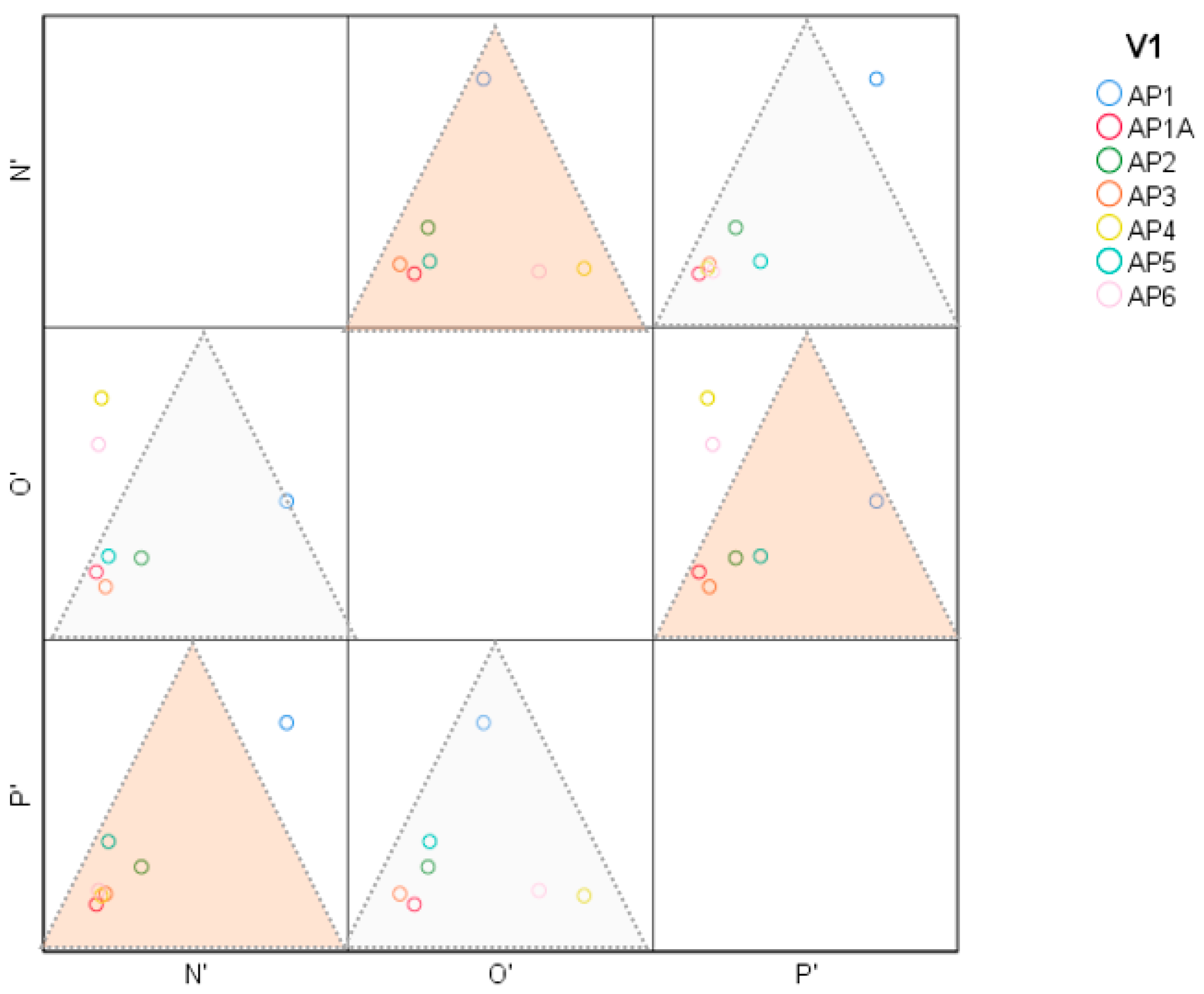
| Author | Year | Approach | Impact |
|---|---|---|---|
| Pellegrini G., Terribile F., Tarola O., Muchigrosso T. & Busillo F. | 2011 | During the 2007–2013 financial perspective, the budget allocations to regional policies are analyzed in order to identify the structural impact of the European funds used in economic growth; EU significant regional disparities have shown the need for strengthening regional policies under the motto of growth, which was the subject of the convergence programs during 2007–2013 [1] (pp. 217–233). | The impact of regional policies is assessed at 0.6–0.9% of the regional GDP sustainable growth on development policy levels through structural funds. This percentage reached up to 7–10%, depending on the regions and the financing policies, at the end of the analyzed period. The estimated average growth of the structural allocations impact was forecasted at 69% over a 50-year horizon, provided that convergence efforts were maintained. The regional disparities are projected to decline over time in the context of economic policy efforts with micro- and macroeconomic impacts. We built our NOP model in order to cover the lack of a mathematical approach in regional financial policies disparities in theory and practice. |
| Crescenzi R. & Rodriques-Pose A. | 2012 | Analysis of the regional capacity attributable to a sustainable transport infrastructure able to generate economic growth. The analysis of the infrastructure investments’ effect on the regional welfare growth and the indirect relationship regarding the investment costs in the EU (for example, the TEN-T project has absorbed 76 billion EUR from the ERDF during 2007–2013) [2] (pp. 487–513). | The strengthening of regional transport capacity and the establishment of transnational corridors represent a net resource for welfare growth, materialized in steady and sustainable GDP growth in all Member States, post-crisis economic recovery, and the opening of European barriers to trade globally during 2014–2020. The NOP model is able to quantify the sustainable economic growth in the most appropriate manner. |
| Kyriacou A.P. & Roca-Sagales O. | 2012 | The analysis of the impact of European funds allocation under regional disparities; the structural funds reduce long-term regional disparities through technology transfer and sustainable economic growth [3] (pp. 267–281). | The analysis was focused on Cyprus and Malta and demonstrated that the regional disparities reduction by allocating structural funds at the national level was possible through robust programs according to a common European agenda. The NOP model can be applied for Cyprus and Malta, as well. |
| Bachtler J., Mendez C. & Oraze H. | 2013 | Analyzing the role of administrative capacity in managing European cohesion policies [4] (pp. 735–757). | The impact of the regional administrative capacity is manifested by accelerating the growth functions in relation to compliance with the access to European funds during the post-implementation period of the investments, as well. The NOP model offers a new approach in analyzing EU structural funds. |
| Pinho C., Varum C. & Antunes M. | 2015 | The analysis of the structural funds allocation’s efficiency on cohesion groups with impact on the residual regional economic welfare growth. [5] (pp. 1302–1326). | Reviewing the effects of structural fund allocations aiming at correcting allocation policies by promoting fund beneficiaries’ education and innovation orientation as keys to generating regional policy success for Horizon 2020 growth programs. |
| Biondi Y. | 2014 | Assessing the fundamental role of the accounting system and EPSAS harmonized standards with public governance as a measure of generating public funding systems in the context of the economic crisis [6]. | Analysis of the economic crisis situations in the Member States (France, Finland, and the UK) in the light of the necessary transformations of the European economies through the public administration and national accounts system’s control mechanisms. Under Structural Funds, the research can be translated by highlighting the absorption vulnerabilities during crisis, respectively the vulnerabilities generated by unbalanced national budgets and growing public debt. The NOP model can be applied to France and Finland. The UK is not a member of the EU at this time. |
| Tosun J. | 2014 | Assessing the determinants of the European funds’ absorption rate, considering the hypotheses of fiscal decentralization with a direct negative impact on the structural funds’ absorption [7] (pp. 371–387). | The analysis of financing programs and their finality in the European Funds’ absorption (focusing on ERDF); the analysis of the variation in the absorption degree in different countries, related to performance based on government re-capacity models in the context of the existence/absence of fiscal decentralization. |
| McCann Ph. | 2014 | Presenting the smart concept applicable to regional governance as a regional performance generator in the context of European architecture. There is a need for a global post-crisis financial recovery, and the concepts of efficiency and effectiveness can be applied to regional development policies in order to ensure the premise of achieving performance [8] (pp. 409–427). | In the field of structural funds, the training of specialists with smart competencies would revive the bureaucratic framework and motivate beneficiaries to increase performance during the conceptualization of the investment and its declaration to the managing authorities. The implementation of the NOP model can support decision makers to adopt better financial management. |
| Haughton T. | 2014 | The analysis of the financial allocations through the direct infusion of capital with effect in the recapture of the regional economies in the central and the east European area [9] (pp. 71–87). | Demonstrating that the lack of managerial capacity of government representatives on issues of incompetence reduces the level of regional development, directly affecting the proposed policies for which the EU has allocated funds. The policy makers have a direct role in the bureaucratization of the financial allocation process and are present in the implementation mechanism in all Eastern European countries. The NOP model uses the law practices in limiting the error and fraud during the EU funds’ allocation. |
| Zaman Gh. & Georgescu G. | 2014 | A descriptive analysis of the financial execution of the European funds allocation programs during 2007–2013, focusing on the case of Romania, for which the absorption rate was 27% (a historical minimum in relation to the other Member States according to the authors’ research) [10] (pp. 0–18). | Analysis of the negative trends of the European Funds’ development and assimilation, which can constitute the structure of a skeleton of regional vulnerabilities recorded in the favorable international context, a framework that can be adjusted in terms of expressing an appropriate political will. |
| Batusaru C., Otetea A. & Ungureanu M.A. | 2015 | The analysis of the European funds absorption failure in Romania during 2007-2013 and the development of good practice models for the prevention of failure in terms of allocations during 2014-2020 [11] (pp. 21–35). | In the context of the sustained concerns for assessing the systemic vulnerabilities of the national economy in accessing structural funds generating economic growth, there is the inconsistency of the regional policies adopted at the national level in Romania, which in our opinion is the biggest alarm signal involving emergency re-capacitation by absorbing the competent workforce of the public administration. |
| Palea V. | 2016 | The pragmatic analysis of the accounting aspects generating surplus value on all economic scales congruent to sustainable development; introducing a parallel analysis between the European and American accounts system brings to light the fragility of the financial reporting used as descriptors of financial stability for each entity in the system [12] (pp. 59–73). | Shutting down the public system between performance and non-performance involves all the actors in the system in creating a responsible financial decision-making framework, concentrating on a joint effort to develop free markets, the corporate governance of multinational entities, and regulatory mechanisms for stock and values exchanges. Economic sustainability becomes the complex result of cumulative factors. It becomes a desirable target on which financial allocations are concentrated, including through the Structural Funds at EU level. |
| Barnet W.A. & Gaekwad N.B. | 2017 | The analysis of the elasticity of unit allocations in current prices within the EMU11 with the segregation of monetary aggregates on the Governing Council’s objectives; highlighting the representative role of the consumer function on local and flexible mechanisms in indirect relation to the utility function [13] (pp. 353–371). | The use of benchmark rates to assess the net effects of investments without the causal influence of other external factors should be maximized under the yield-adjusted return curve. In the context of medium transparency, high sustainable growth economies are able to obtain a higher monetary asset reimbursement than those in which the sustainable factor is diluted. In terms of Structural Funds, this theory is reflected in the fact that the absorption rates are higher when sustainable economic growth is higher. |
| Machado M.R.R. & Gartner I.R. | 2018 | Aspects of the fraud phenomenon through the classic Cressey’s hypothesis on the fraud triangle launched in 1953 [14] (pp. 60–81). | Confirming Cressey’s hypothesis, which generates the dissipation of confidence in macroeconomic financial stability in the conditions of the presence of the three dimensions of the triangle (pressure, opportunity, and rationalization). |
| Oroszki J. | 2019 | Fraud risk analysis of the European budget through specific measures to reduce the phenomenon of fraud in the three identified specific stages (detection, deterrence, and prevention); highlighting the structural aspects of fraud management and addressing fraud areas through focused audit actions and highlighting OLAF’s role. [15] (pp. 26–31). | Creating antifraud pattern by a causal analysis of fraud motivation and establishing a training program for professionals specializing in detecting the psychological profiles of individuals and entities prone to fraud. |
| Chersan I.C. | 2019 | The analysis of the need for financing in relation to the public financing capacity through the perspective of the fiscal regulator; taxation can redress the national economic growth through budgetary mechanisms. Romania is given as an example of bad management. [16] (pp. 93–105). | Highlighting the complex role of fiscal reform in modernizing and improving compliance with European policies and generating fair practices for all the beneficiaries of the tax system. |
| Variable | Last approved measure |
|---|---|
| Procedural rules’ clarification | Ministry of European Funds’ Order no. 393/2018 |
| Standardization of application forms for obtaining funding | Ministry of European Funds’ Order no. 2010/2016 |
| Predictability of financing actions - Staging activities with the calendar | Ministry of European Funds’ Memorandum on January 2016 |
| Establishing measures to prevent, conclude and sanction irregularities in obtaining and using non-reimbursable funds | Emergency Ordinance published in Official Paper no. 480/2014 for amending Emergency Ordinance no. 66/2011 |
| Establishing a reliable institutional framework | Ministry of European Funds’ Order no. 726/2018 |
| ISRS 4400 measures applicable to auditing European Funds during 2007–2013 and 2014–2020 | Viable measures applicable through the implementation of ISA 805 standard |
|---|---|
| The mission of performing the agreed financial information procedures is not an ISA audit | Performing an audit mission and applying all ISA 100-700 standards |
| Independence is not a mandatory requirement | Independence is a mandatory requirement |
| Testing the internal control system and assessing the risks of fraud are optional | Testing the internal control system and assessing the risks of fraud are mandatory |
| The different mission letter | The different mission letter |
| Restrictions in using the report | Restrictions in using the report |
| Significance threshold: 100% | Significance threshold: Sampling |
| Lower coverage | Greater coverage |
| Reporting: Report on factual findings | Reporting: Independent auditor’s report |
| No insurance is provided | High, but not absolute, insurance is provided |
| N | Mean Difference | Std. Deviation | Std. Error Mean | |
|---|---|---|---|---|
| OP - Infrastructure /EU Budget - OP - Large Infrastructure /EU Budget | 7 | −23,828,422.25 | 35,522,379.89 | 13,426,197.59 |
| OP - Infrastructure projects sent to EU - OP - Large Infrastructure projects sent to EU | 7 | −30,029,103.19 | 46,492,111.30 | 17,572,366.34 |
| OP - Infrastructure approved projects by EU - OP - Large Infrastructure approved projects by EU | 7 | −34,964,710.42 | 58,162,977.29 | 21,983,539.06 |
| Bayes Factor | t | df | Sig.(2-tailed) | |
|---|---|---|---|---|
| OP - Infrastructure /EU Budget - OP - Large Infrastructure /EU Budget | 1.124 | −1.775 | 6 | 0.126 |
| OP - Infrastructure projects sent to EU - OP - Large Infrastructure projects sent to EU | 1.207 | −1.709 | 6 | 0.138 |
| OP - Infrastructure approved projects by EU - OP - Large Infrastructure approved projects by EU | 1.367 | −1.590 | 6 | 0.163 |
| N | Posterior | |||
|---|---|---|---|---|
| Mode | Mean | Variance | ||
| OP - Infrastructure /EU Budget - OP - Large Infrastructure /EU Budget | 7 | −23,828,422.25 | −23,828,422.25 | 540,788,345,846,614.06 |
| OP - Infrastructure projects sent to EU - OP - Large Infrastructure projects sent to EU | 7 | −30,029,103.19 | −30,029,103.19 | 926,364,177,085,827.60 |
| OP - Infrastructure approved projects by EU - OP - Large Infrastructure approved projects by EU | 7 | −34,964,710.42 | −34,964,710.42 | 1,449,827,968,934,514.20 |
| 95% Credible Interval | ||
|---|---|---|
| Lower Bound | Upper Bound | |
| OP - Infrastructure /EU Budget - OP - Large Infrastructure /EU Budget | −69,483,360.03 | 21,826,515.53 |
| OP - Infrastructure projects sent to EU - OP - Large Infrastructure projects sent to EU | −89,782,826.20 | 29,724,619.80 |
| OP - Infrastructure approved projects by EU - OP - Large Infrastructure approved projects by EU | −109,718,347.91 | 39,788,927.06 |
| N | Posterior | |||
|---|---|---|---|---|
| Mode | Mean | Variance | ||
| OP - Infrastructure /EU Budget - OP - Large Infrastructure /EU Budget | 7 | −23,828,422.25 | −23,828,422.25 | 540,788,345,846,614.06 |
| OP - Infrastructure projects sent to EU - OP - Large Infrastructure projects sent to EU | 7 | −29,727,616.53 | −29,727,616.53 | 909,325,604,671,907.40 |
| OP - Infrastructure approved projects by EU - OP - Large Infrastructure approved projects by EU | 7 | −34,490,738.92 | −34,490,738.92 | 1,433,638,850,549,458.00 |
| 95% Credible Interval | ||
| Lower Bound | Upper Bound | |
| OP - Infrastructure /EU Budget - OP - Large Infrastructure /EU Budget | −69,483,360.036 | 21,826,515.53 |
| OP - Infrastructure projects sent to EU - OP - Large Infrastructure projects sent to EU | −88,929,265.49 | 29,474,032.42 |
| OP - Infrastructure approved projects by EU - OP - Large Infrastructure approved projects by EU | −108,825,846.47 | 39,844,368.62 |
| Correlation | Sig. | t | df | Sig. (2-tailed) | ||
|---|---|---|---|---|---|---|
| Pair 1 | N & N′ | 0.999 | 0.000 | 2.259 | 6 | 0.065 |
| Pair 2 | O & O′ | 0.945 | 0.001 | 1.047 | 6 | 0.335 |
| Pair 3 | P & P′ | 0.996 | 0.000 | 1.742 | 6 | 0.132 |
| N | O | P | |
|---|---|---|---|
| N | 1.000 | −0.109 | 0.974 |
| O | −0.109 | 1.000 | −0.128 |
| P | 0.974 | −0.128 | 1.000 |
| N′ | O′ | P′ | |
|---|---|---|---|
| N′ | 1.000 | 0.024 | 0.956 |
| O′ | 0.024 | 1.000 | 0.002 |
| P′ | 0.956 | 0.002 | 1.000 |
| Priority Axes underOP-Environment | Currency | The Budget Approved Amount on PAs under OP-Environment | The Expenditure Amount Affected by the Irregularity | |
|---|---|---|---|---|
| Total | EU Contribution | |||
| PA1 | EUR | 3,149,423,956.00 | 2,776,532,160.00 | 157,878,544.00 |
| PA1A | EUR | 122,728,555.00 | 100,000,000.00 | 412,963.00 |
| PA2 | EUR | 878,476,962.00 | 734,223,079.00 | 34,423,214.00 |
| PA3 | EUR | 388,640,131.00 | 229,268,644.00 | 15,240,809.00 |
| PA4 | EUR | 191,098,548.00 | 171,988,693.00 | 6,705,010.00 |
| PA5 | EUR | 315,839,375.00 | 270,017,139.00 | 43,766,635.00 |
| PA6 | EUR | 144,933,804.00 | 130,440,423.00 | 9,798,840.00 |
| Total | EUR | 5,191,141,331.00 | 4,412,470,138.00 | 268,226,014.00 |
| Priority axes under OP-Environment | Number of submitted projects | Currency | Value of submitted projects | |
| Total | EU contribution | |||
| PA1 | 105.00 | EUR | 3,720,142,606.00 | 2,358,923,836.00 |
| PA1A | 24.00 | EUR | 82,184,948.00 | 54,003,465.00 |
| PA2 | 42.00 | EUR | 1,121,961,658.00 | 689,031,257.00 |
| PA3 | 7.00 | EUR | 382,900,084.00 | 153,118,539.00 |
| PA4 | 395.00 | EUR | 514,678,996.00 | 379,137,649.00 |
| PA5 | 47.00 | EUR | 512,475,684.00 | 402,437,846.00 |
| PA6 | 170.00 | EUR | 140,375,682.00 | 113,201,422.00 |
| Total | 790.00 | EUR | 6,474,719,658.00 | 4,149,854,014.00 |
| Priority axes under OP-Environment | Number of approved projects | Currency | Value of approved projects | |
| Total | EU contribution | |||
| PA1 | 105.00 | EUR | 3,720,142,606.00 | 2,358,923,836.00 |
| PA1A | 24.00 | EUR | 82,184,948.00 | 54,003,465.00 |
| PA2 | 40.00 | EUR | 1,070,507,591.37 | 649,122,650.46 |
| PA3 | 7.00 | EUR | 382,900,084.00 | 153,118,539.00 |
| PA4 | 223.00 | EUR | 233,912,223.40 | 175,236,415.97 |
| PA5 | 42.00 | EUR | 459,623,284.16 | 365,443,339.45 |
| PA6 | 170.00 | EUR | 140,375,682.00 | 113,201,422.00 |
| Total | 611.00 | EUR | 6,089,646,418.93 | 3,869,049,667.88 |
| Priority axes underOP-LargeInfrastructure | Currency | The Budget Approved Amount on PAs under OP-Large Infrastructure | The Expenditure Amount Affected by the Irregularity | |
|---|---|---|---|---|
| Total | EU contribution | |||
| PA1 | EUR | 4,005,006,258.00 | 3,404,255,320.00 | 1,685,959.11 |
| PA2 | EUR | 1,885,570,536.00 | 1,602,734,955.00 | 380,629.44 |
| PA3 | EUR | 3,402,875,042.00 | 2,892,443,785.00 | 1,154,792.48 |
| PA4 | EUR | 382,978,724.00 | 325,531,915.00 | 46,738.28 |
| PA5 | EUR | 563,204,005.00 | 478,723,404.00 | 333,187.00 |
| PA6 | EUR | 232,152,691.00 | 197,329,787.00 | 7,526.80 |
| PA7 | EUR | 293,504,381.00 | 249,478,723.00 | 25,353.63 |
| PA8 | EUR | 80,031,289.32 | 68,026,595.92 | 18,056.72 |
| Total | EUR | 10,845,322,926.32 | 9,218,524,484.92 | 3,652,243.47 |
| Priority axes underOP-LargeInfrastructure | Number of submitted projects | Currency | Value of submitted projects | |
| Total | EU contribution | |||
| PA1 | 35.00 | EUR | 5,951,062,335.42 | 4,589,430,095.00 |
| PA2 | 79.00 | EUR | 3,301,104,880.00 | 2,515,934,227.00 |
| PA3 | 98.00 | EUR | 2,925,904,175.00 | 2,467,040,076.00 |
| PA4 | 141.00 | EUR | 341,837,310.00 | 283,705,806.00 |
| PA5 | 8.00 | EUR | 835,218,265.00 | 622,850,365.00 |
| PA6 | 52.00 | EUR | 125,184,775.04 | 91,659,059.00 |
| PA7 | 6.00 | EUR | 97,130,383.42 | 81,653,055.00 |
| PA8 | 2.00 | EUR | 96,228,514.54 | 58,021,878.00 |
| Total | 421.00 | EUR | 13,673,670,638.42 | 10,710,294,561.00 |
| Priority axes underOP-LargeInfrastructure | Number of approved projects | Currency | Value of approved projects | |
| Total | EU contribution | |||
| PA1 | 22.00 | EUR | 4,789,310,047.95 | 3,592,343,818.64 |
| PA2 | 40.00 | EUR | 1,069,462,226.98 | 811,023,128.51 |
| PA3 | 95.00 | EUR | 2,894,782,106.53 | 2,460,564,791.00 |
| PA4 | 59.00 | EUR | 117,161,426.67 | 99,587,213.00 |
| PA5 | 8.00 | EUR | 835,218,265.00 | 709,935,525.00 |
| PA6 | 15.00 | EUR | 25,098,833.65 | 16,037,668.81 |
| PA7 | 4.00 | EUR | 63,555,337.10 | 54,022,036.54 |
| PA8 | 1.00 | EUR | 45,263,785.50 | 38,474,217.67 |
| Total | 244.00 | EUR | 9,839,852,029.38 | 7,781,988,399.17 |
© 2020 by the authors. Licensee MDPI, Basel, Switzerland. This article is an open access article distributed under the terms and conditions of the Creative Commons Attribution (CC BY) license (http://creativecommons.org/licenses/by/4.0/).
Share and Cite
Antohi, V.-M.; Zlati, M.L.; Ionescu, R.V.; Neculita, M.; Rusu, R.; Constantin, A. Attracting European Funds in the Romanian Economy and Leverage Points for Securing their Sustainable Management: A Critical Auditing Analysis. Sustainability 2020, 12, 5458. https://doi.org/10.3390/su12135458
Antohi V-M, Zlati ML, Ionescu RV, Neculita M, Rusu R, Constantin A. Attracting European Funds in the Romanian Economy and Leverage Points for Securing their Sustainable Management: A Critical Auditing Analysis. Sustainability. 2020; 12(13):5458. https://doi.org/10.3390/su12135458
Chicago/Turabian StyleAntohi, Valentin-Marian, Monica Laura Zlati, Romeo Victor Ionescu, Mihaela Neculita, Raluca Rusu, and Aurelian Constantin. 2020. "Attracting European Funds in the Romanian Economy and Leverage Points for Securing their Sustainable Management: A Critical Auditing Analysis" Sustainability 12, no. 13: 5458. https://doi.org/10.3390/su12135458
APA StyleAntohi, V.-M., Zlati, M. L., Ionescu, R. V., Neculita, M., Rusu, R., & Constantin, A. (2020). Attracting European Funds in the Romanian Economy and Leverage Points for Securing their Sustainable Management: A Critical Auditing Analysis. Sustainability, 12(13), 5458. https://doi.org/10.3390/su12135458






